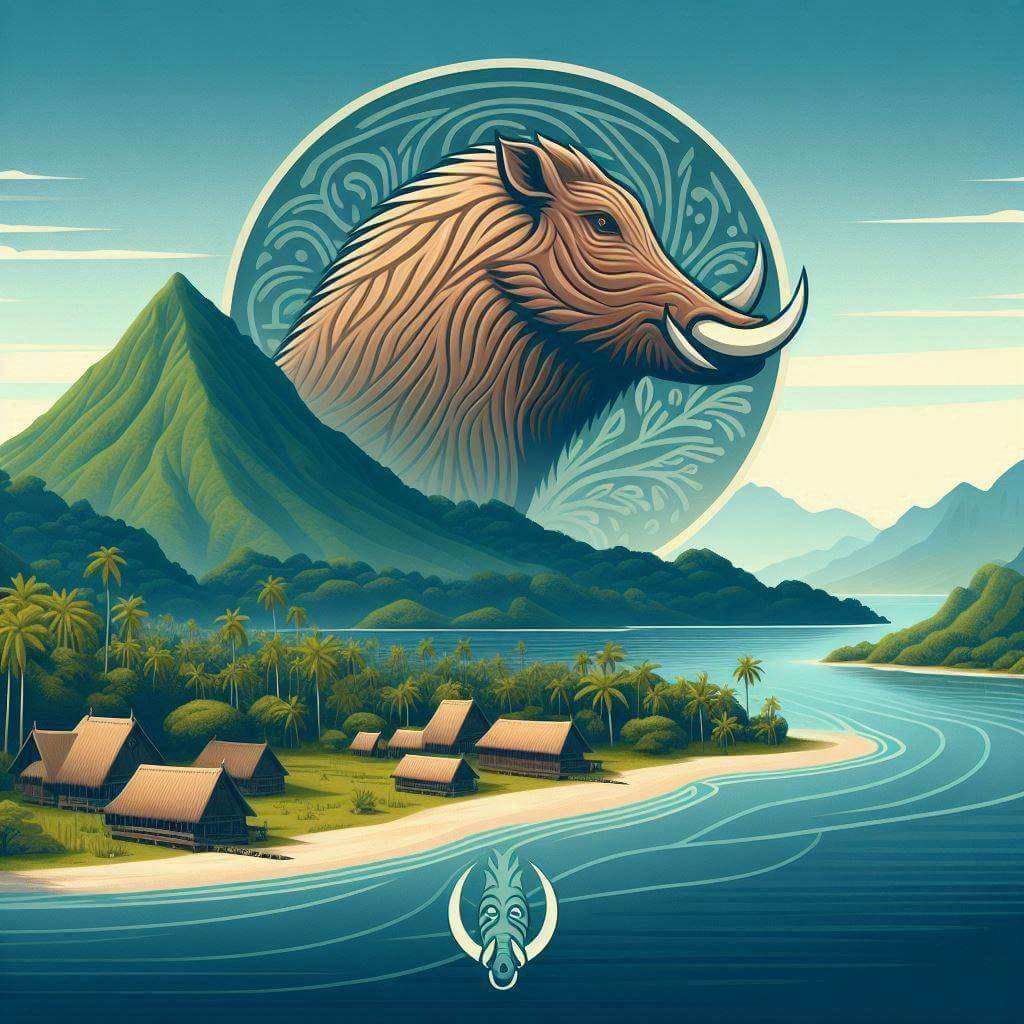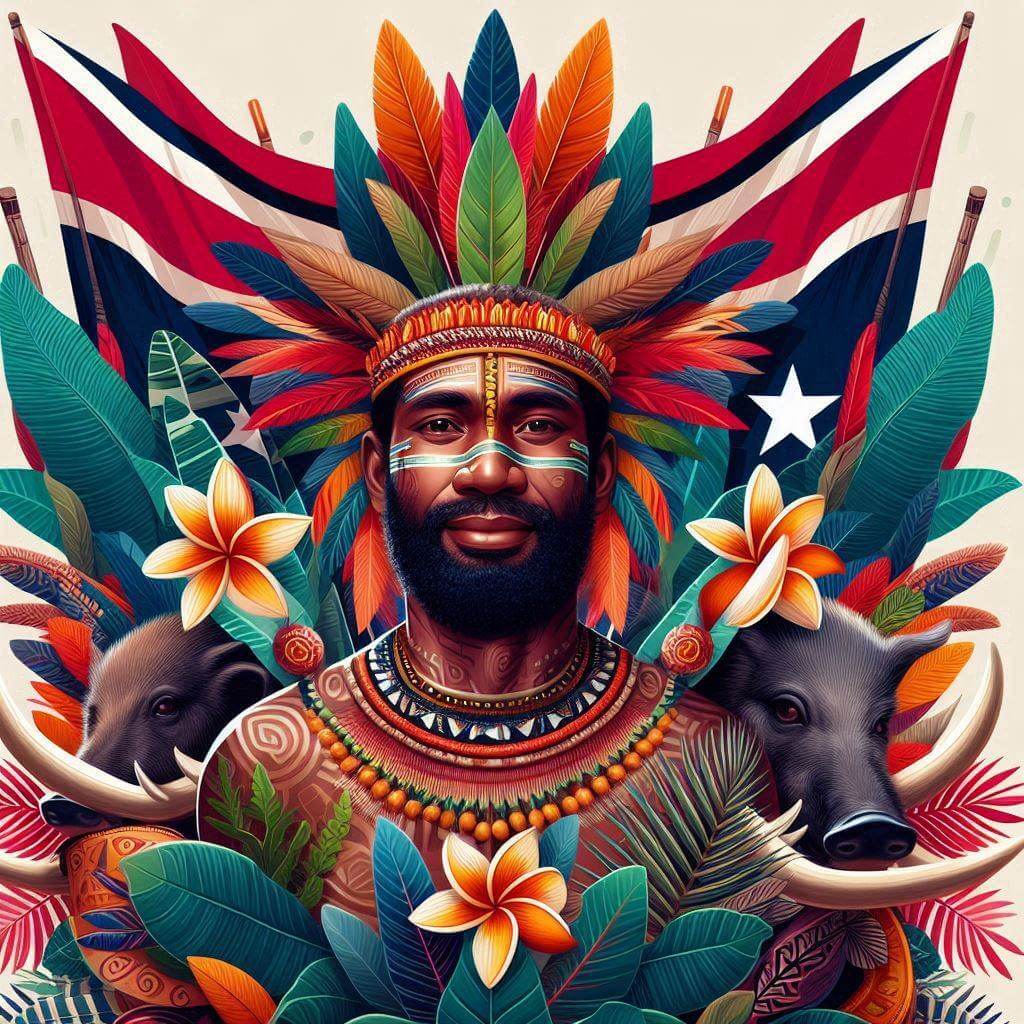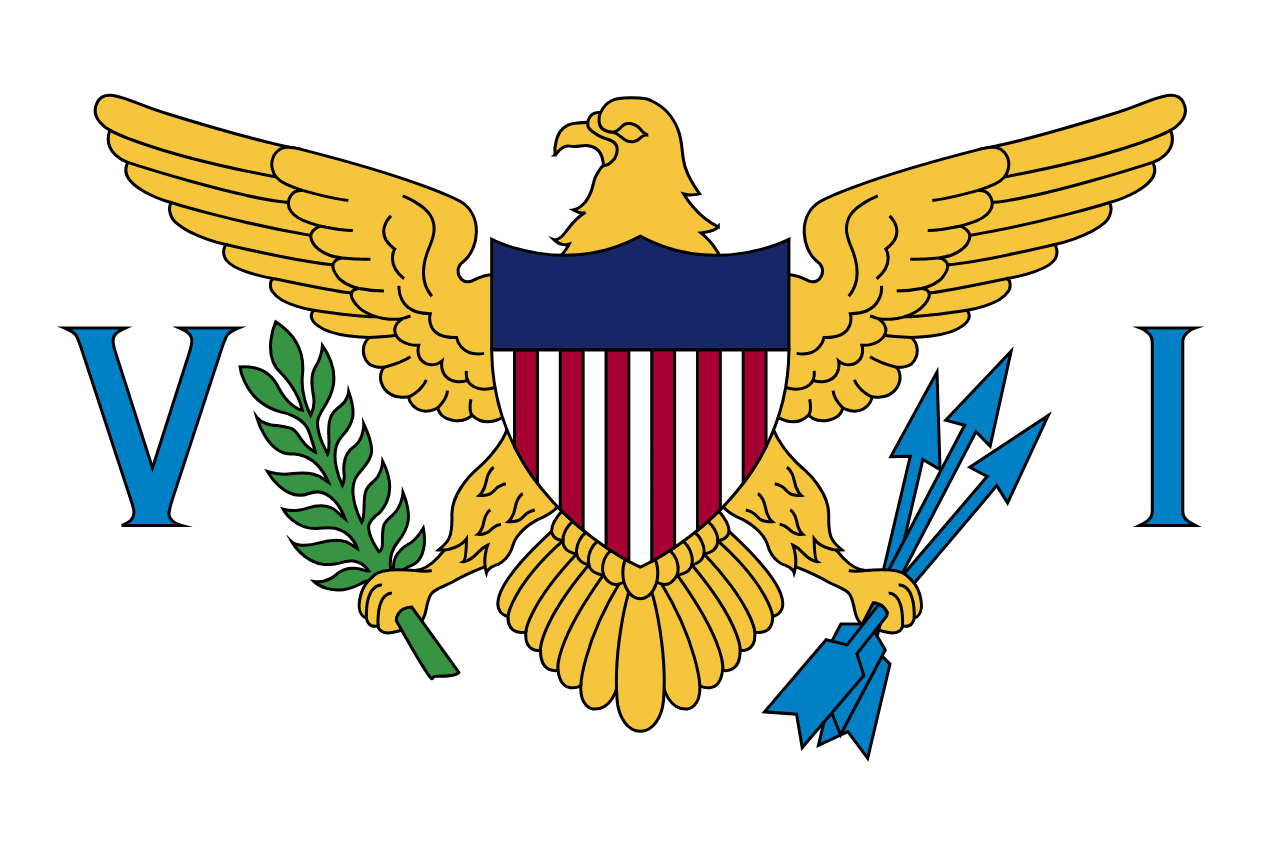La bandera de Vanuatu es una representación llamativa y simbólica de la cultura, la historia y las aspiraciones de esta nación insular del Pacífico Sur. Su diseño único presenta una forma de Y horizontal de color negro, bordeada por amarillo, dividiendo la bandera en tres secciones distintas: un triángulo rojo en el lado de la asta, y triángulos verde y negro en el lado del vuelo. Dentro del triángulo negro, destaca un prominente emblema amarillo que representa un colmillo de jabalí rodeando dos hojas cruzadas de namele, simbolizando la paz y la rica cultura ni-vanuatu.
Información de Vanuatu
| Día Nacional de la Bandera | — |
| Estado soberano | Sí |
| Nombre oficial | República de Vanuatu |
| Capital | Port Vila |
| Población | 243,304 |
| Área | 12,189 km² |
| Moneda | Vatu (VUV) |
| Idioma | Bislama, inglés, francés |
| Continente | Oceanía |
| Región | Melanesia |
| Subregión | — |
| Fronteras | — |
| Zona horaria | Hora de Vanuatu (VUT) UTC+11 |
| Código de llamada | +678 |
| Dominio de nivel superior | .vu |
Historia de la bandera de Vanuatu
 La bandera de Vanuatu fue adoptada oficialmente el 13 de febrero de 1980, coincidiendo con la independencia del país del dominio colonial conjunto británico y francés, conocido como el Condominio Anglo-Francés. Este acuerdo de condominio, a veces llamado humorísticamente "Pandemonium" debido a su complejidad, había estado en vigor desde 1906.
La bandera de Vanuatu fue adoptada oficialmente el 13 de febrero de 1980, coincidiendo con la independencia del país del dominio colonial conjunto británico y francés, conocido como el Condominio Anglo-Francés. Este acuerdo de condominio, a veces llamado humorísticamente "Pandemonium" debido a su complejidad, había estado en vigor desde 1906.
El diseño fue el resultado de un concurso ganado por el artista local Kalontas Malon, quien incorporó hábilmente elementos que representaban la diversa herencia de Vanuatu y las aspiraciones para el futuro. La creación de la bandera fue un momento significativo en la historia de Vanuatu, simbolizando la unidad de las muchas islas y culturas de la nación bajo una identidad independiente.
Antes de la independencia, se usaron diferentes banderas por parte del gobierno del Condominio Anglo-Francés y varios movimientos políticos locales. La adopción de la bandera actual marcó una ruptura clara con el pasado colonial y el surgimiento de Vanuatu como nación soberana.
Simbolismo y diseño de la bandera de Vanuatu
Cada elemento de la bandera de Vanuatu tiene un profundo significado simbólico, reflejando la cultura, la historia y el entorno de la nación:
- El triángulo rojo representa la sangre derramada durante la lucha por la independencia y el poder unificador del cristianismo en la nación. El rojo también es un color tradicional en la cultura melanesia.
- El triángulo verde simboliza las tierras fértiles y exuberantes de las islas de Vanuatu y la riqueza agrícola de la nación. La agricultura sigue siendo una parte crucial de la economía y la forma de vida de Vanuatu.
- El negro representa al pueblo melanesio, que forma la mayoría de la población de Vanuatu. También simboliza el rico suelo volcánico de las islas.
- La forma de Y amarilla significa la luz del Evangelio que se extiende a través de las islas del Pacífico. También representa la forma del archipiélago de Vanuatu.
- Los colores negro y amarillo rinden homenaje a los diseños tradicionales melanesios y las formas artísticas.
- El emblema amarillo del colmillo de jabalí es un símbolo de prosperidad y poder en la cultura de Vanuatu. En la sociedad tradicional, solo los hombres más importantes podían usar un colmillo de jabalí.
- Las hojas cruzadas de namele representan la paz y se utilizan en ceremonias tradicionales. El namele (Cycas) es una planta tipo palma nativa de Vanuatu y tiene una gran importancia cultural.
Uso y significado de la bandera de Vanuatu
 La bandera de Vanuatu es un símbolo poderoso de la identidad nacional y el orgullo. Se exhibe prominentemente durante las celebraciones nacionales, como el Día de la Independencia el 30 de julio, y en eventos internacionales donde Vanuatu está representado. La bandera ondea sobre edificios gubernamentales, escuelas e instituciones públicas en todo el país.
La bandera de Vanuatu es un símbolo poderoso de la identidad nacional y el orgullo. Se exhibe prominentemente durante las celebraciones nacionales, como el Día de la Independencia el 30 de julio, y en eventos internacionales donde Vanuatu está representado. La bandera ondea sobre edificios gubernamentales, escuelas e instituciones públicas en todo el país.
En los entornos educativos, la bandera se utiliza para enseñar a los jóvenes ni-vanuatu sobre la historia, los valores y la herencia cultural de su país. Su diseño único hace que sea fácilmente reconocible entre otras banderas nacionales, reflejando el lugar distintivo de Vanuatu en la comunidad global.
La bandera también juega un papel importante en la industria turística de Vanuatu, sirviendo como una representación visual de la cultura única y la belleza natural del país para los visitantes de todo el mundo.
Datos interesantes sobre la bandera de Vanuatu
- Vanuatu es un archipiélago de 83 islas en el Pacífico Sur, conocido por su cultura diversa, paisajes impresionantes y como el hogar original del bungee jumping.
- El diseño de la bandera refleja no solo la belleza natural del país, sino también su compleja herencia cultural, combinando las tradiciones melanesias con las influencias coloniales.
- El emblema amarillo del colmillo de jabalí es especialmente significativo en la cultura de Vanuatu, utilizado a menudo en ceremonias tradicionales y como símbolo de riqueza y estatus.
- Los colores de la bandera - rojo, verde, negro y amarillo - se encuentran comúnmente en el arte tradicional melanesio y en la ropa.
- La bandera de Vanuatu es una de las pocas banderas nacionales que utiliza el color negro como color principal, lo que le da una apariencia distintiva entre las banderas del mundo.
- La forma de Y en la bandera a veces se interpreta como representativa de la forma del archipiélago de Vanuatu, aunque esto no es una parte oficial del simbolismo.
- La bandera fue diseñada para ser reconocible desde ambos lados, lo cual es importante para una nación de islas donde las banderas a menudo se ven desde varios ángulos.





